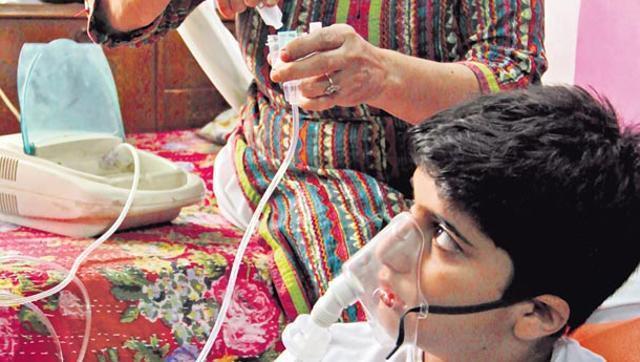Kolkata fourth most polluted megacity with coarse dust particles in the air
Construction activity the main culprit.
Coarse dust particles - a byproduct of construction activities - have made Kolkata the fourth most polluted ‘megacity’ in the world, a recent report published by the World Health Organization (WHO) claims.

While the report has placed Delhi at the top of the list, Cairo and Dhaka occupy the second and third positions respectively. Kolkata comes fourth just ahead of Mumbai.
Read: Track pollution in your city with this real-time air quality map
According to the report the PM10 level in Kolkata during this pseriod was nearly seven times the limit prescribed by WHO. If one considers the Indian safety limits, which is less stringent, Kolkata’s PM10 pollution level is more than double.
These particles can cause asthma attacks, aggravate bronchitis and other lung diseases, and reduce the body’s ability to fight infections, said doctors.
A megacity has been defined as one with more than 14 million residents. Other cities such as Beijing, Shanghai, Mexico City, Sao Paolo follows Kolkata in the list.

There are many pollutants in the air of a big city. This report ranks the cities in terms of the bigger, coarse partticles as opposed to the fine ones. These particles are denoted as PM10 level – particulate matter. In other words, these are between 2.5 and 10 micrometers in diameter and float in the air. A human hair measures 100 microns in diameter.
Read: Half of world’s 20 most polluted cities in India, Delhi in 11th position
The report is based on the presence of such particles in the air of the city between 2011 and 2015.
This list was prepared solely on the basis of PM10 level,a nd other pollutants such as PM2.5, NOx, SOx, CO2 etc were not included. If all Indian cities are taken into account the Gwallior reported the highest pollution. (But it is not a megacity.)
While the city’s PM10 level soared to around 140 micrograms per cubic metre, the WHO’s safety limit for this coarse pollutants is not more than 20 micrograms per cubic metre. The Indian safety limit is 60 micrograms per cubic metre.
Delhi which has been ranked as the most polluted megacity has PM10 level as high as 240 micrograms per cubic metre. Mumbai which ranks fifth has PM10 level around 120 micrograms per cubic metre.
Read: Delhi’s air quality worsens on Thursday, pollution levels severe
The WHO report also suggests that the PM10 level in Kolkata was just around 100 micrograms per cubic metre in 2009-2010. So what forced the level of dust particles to shoot up?
“PM10 are mainly the coarse dust particles that come from construction activities. With construction and development activities shooting up in the city and its fringes over the past few years the level of this pollutant is bound to go up. Besides this the tree cover that could have kept a check on this have also dropped,” said Abhijit Chatterjee, senior atmospheric scientist of Bose Institute.
Chatterjee added that another source of PM10 in Kolkata is the westerly winds that come in from the west and north India during the winter. They bring the dust particles from neighbouring and far flung states including Delhi, UP, Bihar and Jharkhand, raising pollution levels during winter months.
Read: PM2.5 low, PM10 high on dense fog days: SAFAR
Though physicians and scientists claimed that it is the PM2.5 – the finer particulate matter measuring less than 2.5 micros – which are more deadly, they also pointed out PM10 is also bad enough to cause damage and trigger a variety of pulmonary diseases as they can can penetrate deep into the lungs.
“When inhaled these particles invade the respiratory system’s natural defenses and lodge deep in the lungs. They increase the number and severity of asthma attacks, cause or aggravate bronchitis and other lung diseases, and reduce the body’s ability to fight infections. Children and the elderly are most vulnerable. Such cases have shot up manifold in Kolkata over the years,” said Surajit Chatterjee, a senior pulmonologist with the SSKM hospital.





